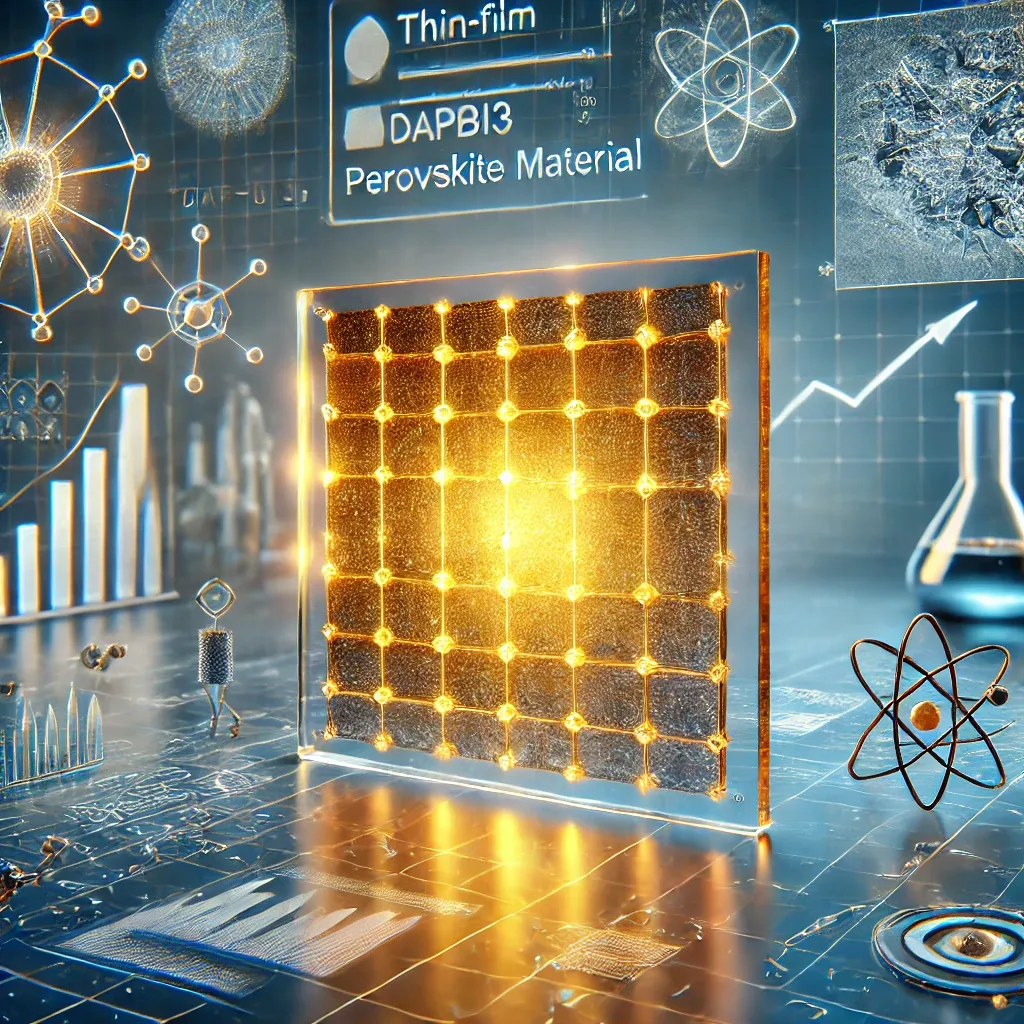A New Step in Perovskite Solar Cells: MAPbI3 Thin Film Solar Cells
Yayın Tarihi | 05 February 2025, Wednesday

The latest innovation in the solar energy sector is the third-generation organic-hybrid thin-film solar cells, distinguished by their perovskite structure. Perovskites with the ABX3 molecular structure have garnered significant interest since their introduction to solar cell research by Miyasaka and his team in 2009. Among different perovskite forms, the methylammonium lead iodide (MAPbI3) structure stands out in solar cell applications with its notable properties in terms of diffusion length, charge carrier lifetime, charge carrier mobility values, and high efficiencies achieved in solar cell applications.
Electrical Characterization and Efficiency Research
A new study was conducted to investigate the structural and electrical properties of MAPbI3 thin-film perovskite solar cells, examining the efficiency drop and the reasons for this decline. The study focuses on the instability mechanism of the perovskite structure, investigating the efficiency drop experienced by solar cells due to external environmental conditions and stress factors. MAPbI3 films are exposed to stress factors mentioned in the literature to understand instability or semi-stability conditions. Subsequently, changes occurring in the material due to exposure to stress factors (laboratory atmosphere, light soaking, UV aging, and high-purity oxygen gas) are characterized using the photoconductivity method. Understanding these changes in MAPbI3 films is expected to contribute to understanding instability or semi-stability, thereby increasing the commercial use of MAPbI3 solar cells in the solar energy sector and contributing to industrial applications.
The Positive Effect of Light Soaking on Solar Cell Efficiency
In the research, it was observed that electronic defects in the structure of the MAPbI3 thin film changed, especially after the application of light soaking. It was determined that these changes partially reverted with thermal treatments. The effect of light soaking was so strong that subsequent UV radiation or oxygen aging processes could not surpass the changes created by light soaking, and it was found that the effect was not observed. The results reveal that among the stress factors the material is exposed to, light soaking is the most effective, and other factors cannot alter the photoconductivity values obtained after light soaking.
Study link: htps://doi.org/10.1007/s10854-024-13459-7

